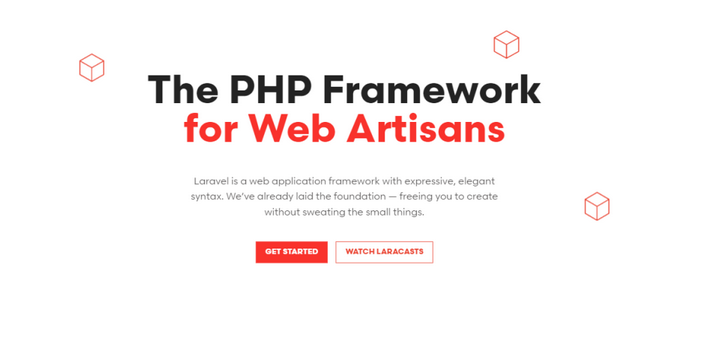Laravel. The name itself evokes a sense of elegance and power in the world of PHP development. It's a framework that has consistently ranked among the most popular choices for building web applications, and for good reason. If you're a budding web developer looking to dive into the world of back-end development, learning Laravel in 2025 is an excellent choice. This post will serve as your deep dive into Laravel, guiding you through its core concepts, benefits, and how to get started.
Why Laravel in 2025?
In a landscape teeming with frameworks, Laravel stands out for several reasons:
- Developer-Friendly: Laravel is designed with developer experience in mind. Its elegant syntax, intuitive structure, and extensive documentation make it easier to learn and use.
- Rapid Development: Laravel's built-in features and tools, such as Artisan commands, Eloquent ORM, and templating engine, significantly speed up the development process.
- Large and Active Community: A thriving community means ample support, resources, and readily available solutions to common problems.
- Security: Laravel takes security seriously, offering built-in protection against common web vulnerabilities.
- Scalability: Laravel applications can scale to handle large amounts of traffic and data.
- Ecosystem: A rich ecosystem of packages and tools extends Laravel's functionality and allows you to integrate with various services.
Key Concepts to Grasp:
Before you jump into coding, understanding these core Laravel concepts will set you up for success:
- MVC Architecture: Laravel follows the Model-View-Controller architectural pattern, which separates concerns and promotes code organization.
- Routing: Routing defines how your application responds to different URLs.
- Controllers: Controllers handle user requests and interact with models.
- Models: Models represent your data and interact with the database.
- Views: Views are responsible for displaying data to the user.
- Blade Templating: Blade is Laravel's templating engine, allowing you to write dynamic HTML.
- Eloquent ORM: Eloquent ORM simplifies database interactions by allowing you to work with your data using expressive PHP code.
- Artisan Commands: Artisan is a command-line interface that provides helpful commands for common tasks like creating controllers, models, and migrations.
Getting Started with Laravel:
- Install PHP and Composer: Laravel requires PHP and Composer, a dependency manager for PHP.
- Install Laravel CLI: Use Composer to install the Laravel command-line interface.
- Create a New Project: Use the Laravel CLI to create a new Laravel project.
- Serve Your Application: Start the development server to view your application in your browser.
- Explore the Project Structure: Familiarize yourself with the different directories and files in your Laravel project.
Building a Simple Application (Example: To-Do List):
A great way to learn Laravel is by building a simple application, such as a to-do list. This will allow you to apply the concepts you've learned and see how they all fit together.
- Create a Model: Use Artisan to create a model for your tasks.
- Create a Migration: Create a database migration to define the table structure for your tasks.
- Create a Controller: Create a controller to handle requests related to tasks.
- Define Routes: Define routes to map URLs to your controller methods.
- Create Views: Create Blade templates to display your tasks.
- Implement Functionality: Write the code to create, read, update, and delete tasks.
Resources for Learning Laravel:
- Official Laravel Documentation: The official documentation is an excellent resource for learning everything about Laravel.
- Laravel Tutorials: Numerous online tutorials and courses are available to guide you through the learning process. Laracasts is a particularly popular and highly recommended platform.
- Laravel Community: The Laravel community is incredibly supportive and helpful. Don't hesitate to ask questions on forums and online communities.
Conclusion
Laravel is a powerful and versatile framework that empowers developers to build modern, scalable, and secure web applications. Its developer-friendly nature, extensive features, and large community make it an excellent choice for beginners in 2025. By understanding the core concepts and practicing with simple projects, you can quickly become proficient in Laravel and build amazing things. So, dive in, explore, and start building! The world of Laravel awaits you.
